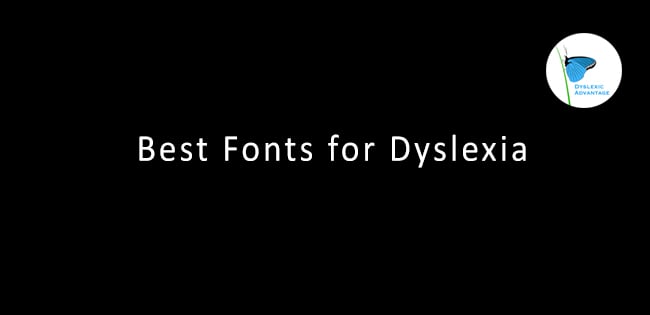With increasing awareness of the visual differences associated with dyslexia and the high incidence of dyslexia in the general population (15-20%), the world seems poised to change how they present print to dyslexic readers. What fonts are best for dyslexic...
Dyslexia and Foreign Language Learning [Premium]
“…reading, writing, listening and speaking skills in foreign languages are all significantly affected by weaknesses in linguistic coding skills even when the native language has been been well-mastered…” – Elike Schneider and Margaret Crombie in Dyslexia and Foreign Language Learning Because of the significant challenges that dyslexic individuals face with the matching sounds and letters of language (phonology / orthography), working memory, retrieval, sequencing, and rote memorization, it should not be surprising that foreign language is a significant challenge facing bilingual students and college-bound dyslexics facing 2 years of foreign language classes to enter higher education. For moderate to severe dyslexics, foreign language waivers are usually granted; however, for all those in-between, there are strategies that build on dyslexic strengths in visual and multisensory […]
STRATEGIES FOR THE MOST COMMON SPELLING MISTAKES: THE SCHWA [Premium]
Once you learn how to recognize the ‘schwa’, you’ll start recognizing them everywhere! In linguistics, the schwa sound is represented by an upside-down ‘e’ and the mouth position is a lot like the ‘uh’ sound in ‘butter’. It contributes to lots of misspellings in dyslexic students (and actually non-dyslexic students too) so recognizing the patterns can significantly improve all-round spelling performance. STRATEGY 1: EXAGGERATE / MISPRONOUNCE THE SCHWA One surprisingly easy strategy is to exaggerate and deliberately mispronounce a word in order to remember the correct spelling. For instance, the-thee reminds you that the schwa is spelled with an ‘e’. Look at the following 3 objects: monitor, computer, and calendar. To remember -or, -er, and -ar, a student can pronounce monitor as mon-i-TOR, exaggerating the […]
Latest Research: Repetition As a Poor Way to Teach Dyslexics [Premium]
In groundbreaking research, researchers at MIT or the Massachusetts Institute of Technology reported that dyslexic children and adults have “a diminished ability to acclimate to a repeated input in their paper titled “Dysfunction of Rapid Neural Adaption in Dyslexia.” Like many research papers, dyslexia is seen through a negative lens (‘dysfunction’) and the take-home points through university press releases, similarly so, however the findings are interesting ones and fit with an evolving picture of dyslexia as a learning difference (rather than disease or disability) that extends beyond reading and has ramifications for many aspects of education. “It’s a difference in the brain that’s not about reading per se, but it’s a difference in perceptual learning that’s pretty broad,” says John Gabrieli, who is the study’s […]
PACIFIC STUDIO VISIT: Interview with Michael Graham about his ‘Dream Job’ Making Museum Exhibits
This past summer, our high school volunteer Krista, my son, and I had a wonderful opportunity to visit Michael Graham, High End Fabrication Program Manager for Pacific Studio in Seattle. Michael has what many would call a dream job - making exhibits for museums all...
Why Dyslexics Excel in Real Estate
"When I see a property I can instantly construct a new house on it. I can see exactly how that house is going to look, and I can walk through every room in that house, and out into the garden, and everywhere. I can turn my thoughts into reality...I can do a detailed...
Why It’s Hard to Proofread and Read Fluently [Premium]
It can be maddening. You look and look you just don’t see it. Later you pass your work along, you see all the thing you hadn’t seen the first time round. What’s going on ? You’ve experienced a ‘trick’ of perception. In our clinic, when trying to explain the phenomenon to children, we often use the analogy of optical illusions…when you see something that’s not there or you miss something – that later you can’t believe you could see at the start. These tricks of perception are what adds to the time needed for many dyslexic students on classroom and standardized exams. It accounts for why some teachers may be flabbergasted by a student’s need for extended time, when they seem so quick with problem solving […]
A New World Shaped by Dyslexics – Thomas G. West
Thanks, Founding Dyslexic Advantage Board Member Tom West for this presentation "A New World Shaped by Dyslexics." Tom is the author of In the Mind's Eye and Thinking Like Einstein for A New World Shaped by Dyslexics for Embrace Dyslexia Symposium in Singapore....
Dyslexia, Storyboarding, and Film Director Martin Scorsese [Premium]
“That’s the way it is with art. It’s not that you want to do it, it’s that you have to do it. You have no choice.” – Martin Scorsese Martin Scorsese is an Academy award winning American director, producer, screenwriter, actor, and film historian with over 50 years in the movie industry, and he is dyslexic. He grew up in a New York tenement, an asthmatic child of a presser and seamstress in the Lower East Side. He recalls spending lots of time in front of a TV set watching good and bad films and going to a local movie theatre with his father and brother. As he watched, he often drew his own scenes, frame by frame in a notebook, flicking pages back and forth […]


![Dyslexia and Foreign Language Learning [Premium]](https://www.dyslexicadvantage.org/wp-content/uploads/2017/05/hello-foreign-language-pixabay.png)
![STRATEGIES FOR THE MOST COMMON SPELLING MISTAKES: THE SCHWA [Premium]](https://www.dyslexicadvantage.org/wp-content/uploads/2017/02/Screen-Shot-2019-09-03-at-2.08.42-PM.jpg)
![Latest Research: Repetition As a Poor Way to Teach Dyslexics [Premium]](https://www.dyslexicadvantage.org/wp-content/uploads/2016/12/shutterstock_133874900.jpg)


![Why It’s Hard to Proofread and Read Fluently [Premium]](https://www.dyslexicadvantage.org/wp-content/uploads/2016/09/Screen-Shot-2017-10-07-at-1.49.34-PM.png)














